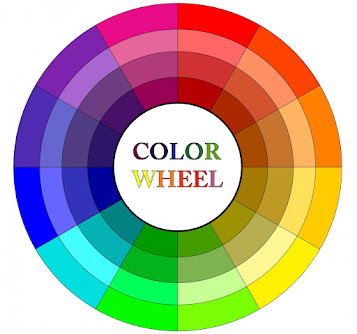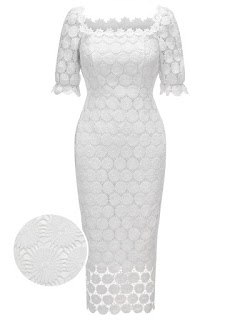Clothing is more than just a physical necessity; it is an essential element of our social and cultural identity. Our clothing choices can have a significant impact on our mood and behavior. In recent decades, researchers have studied the psychological effects of clothing on our behavior, thoughts, and emotions. This article explores the ways in which our clothing choices can influence our self-esteem, cognitive processes, and social interactions.
The Impact of Clothing on Self-Esteem and Confidence:
Our clothing choices can significantly impact our self-esteem and confidence levels. Research has shown that wearing clothing that makes us feel attractive and comfortable can boost our self-esteem and confidence. On the other hand, wearing clothing that we don't like or that doesn't fit well can negatively affect our self-image and confidence. This, in turn, can influence our behavior and make us less likely to participate in social activities.
Furthermore, the color of our clothing can also impact our self-esteem and confidence. Bright and bold colors tend to make people feel more confident and assertive, while darker colors tend to be associated with negative emotions such as sadness and anxiety. Therefore, choosing bright and bold colors can help to boost our confidence and self-esteem, which can have a positive impact on our mood and behavior.
The Influence of Clothing on our Cognitive Processes:
The clothes we wear can also affect our cognitive processes such as attention, memory, and problem-solving skills. For example, wearing clothing that we associate with success or professionalism can enhance our cognitive performance. Studies have found that wearing a lab coat can improve our attention to detail and accuracy, while wearing casual clothes can make us more relaxed and creative.
Moreover, the clothing we wear can also affect our behavior and decision-making processes. Research has shown that wearing formal clothing, such as a suit, can make us more risk-averse and cautious in our decision-making. On the other hand, wearing more casual clothing can make us more open to taking risks and trying new things.
The Role of Clothing in Social Interactions:
Clothing plays a vital role in social interactions, as it is one of the first things people notice about us. The clothes we wear can convey important messages about our personality, status, and values. For instance, wearing a suit can communicate professionalism and authority, while wearing athletic wear can convey a more casual and active lifestyle. This can impact how we are perceived by others and how we interact with them.
Additionally, clothing can also influence our behavior in social situations. For example, wearing clothing that we feel good in can make us more confident, approachable, and assertive. On the other hand, wearing clothing that we are uncomfortable in can make us more withdrawn and less willing to engage with others.
The Influence of Clothing on Emotions:
The clothes we wear can also impact our emotions. Wearing comfortable and cozy clothing can create a sense of relaxation and contentment. Similarly, wearing clothing that we associate with happy memories, such as a favorite t-shirt or a dress worn on a special occasion, can evoke positive emotions and improve our mood.
Additionally, the clothing we wear can affect how we perceive ourselves and our emotions. Research has shown that the clothes we wear can influence our emotional state and behavior. For instance, wearing formal clothing can make us feel more serious and business-like, while wearing casual clothing can make us feel more relaxed and carefree.
Furthermore, the clothes we wear can also influence how others perceive our emotions. For example, wearing dark clothing can make us appear more serious and somber, while wearing bright colors can convey a sense of happiness and joy. This can have important implications for how others respond to us and how we interact with them.
The Impact of Clothing on Body Image:
The clothes we wear can also impact our body image, which can have significant effects on our mental and emotional health. Research has shown that wearing clothing that doesn't fit well or is uncomfortable can negatively impact body image and self-esteem.
Moreover, the media often promotes unrealistic beauty standards, which can lead to body image dissatisfaction and negative feelings towards one's body. Therefore, choosing clothing that fits well and makes us feel comfortable and confident can help improve our body image and self-esteem.
The Significance of Cultural and Religious Clothing:
The significance of clothing goes beyond personal preferences and fashion choices. Clothing is often tied to cultural and religious traditions, and the clothes we wear can convey important messages about our identity and values.
For instance, many religious and cultural groups have specific clothing requirements, such as wearing a hijab in Islam or a yarmulke in Judaism. These clothing choices can communicate important messages about our beliefs, values, and identity.
Furthermore, the clothing we wear can also impact how we are perceived and treated by others. For example, wearing traditional cultural clothing can sometimes result in negative stereotypes and discrimination. However, it can also create a sense of pride and connection to one's cultural heritage.
Conclusion:
In conclusion, clothing is a powerful tool that can influence our mood, behavior, and self-image. Our clothing choices can affect our self-esteem, cognitive processes, social interactions, emotions, and body image. It can also communicate important messages about our cultural and religious identity.
Therefore, it is important to be mindful of the clothes we wear and how they make us feel. By choosing clothing that fits well and makes us feel comfortable and confident, we can improve our self-esteem and body image. By understanding the impact of clothing on our emotions, cognitive processes, and social interactions, we can make informed choices about what we wear and how we present ourselves to the world.
Ultimately, clothing is not just about covering our bodies, but it is also about expressing ourselves and communicating important messages about our identity, values, and beliefs. By paying attention to the psychological effects of clothing, we can use it to our advantage and improve our overall well-being.








































